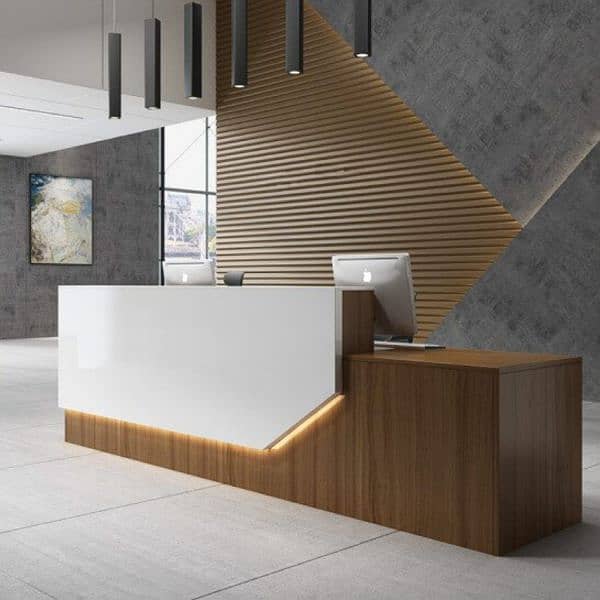In today’s fast-paced world, the concept of reception counters has undergone significant transformations. Reception areas are often the first point of contact for visitors, making them a crucial element of any business or organization. Over the years, reception counter trends have evolved to reflect changing design aesthetics, technological advancements, and the evolving needs of businesses. In this article, we will explore the reception desk fascinating journey of reception counter trends, from their humble beginnings to their modern-day evolution.
Traditional Elegance
The concept of reception counters can be traced back to the early 20th century when businesses and institutions began to recognize the importance of a welcoming reception area. The reception counters of this era were characterized by traditional elegance. They featured ornate wooden designs, intricate carvings, and a focus on craftsmanship. These counters conveyed a sense of grandeur and sophistication, aiming to impress visitors and convey a sense of stability and tradition.
Minimalist Modernism
As we moved into the mid-20th century, reception counter trends shifted towards minimalist modernism. This design philosophy embraced simplicity, clean lines, and the use of materials like glass, steel, and concrete. Reception counters became sleek and unobtrusive, focusing on functionality rather than ornamentation. This trend was influenced by the rise of modern architecture and the desire for a more streamlined and efficient look.
Technological Integration
With the advent of the digital age in the late 20th century, reception counters underwent a significant transformation with the integration of technology. Businesses recognized the importance of providing information and services to visitors through digital interfaces. Reception counters now incorporated computer screens, touch panels, and interactive kiosks to facilitate check-ins, provide information, and enhance the visitor experience. This technological integration not only improved efficiency but also added a futuristic touch to reception areas.
Open and Welcoming Spaces
In the 21st century, reception counter trends took a turn towards open and welcoming spaces. The traditional imposing reception desk gave way to more open and approachable designs. Counters became lower and less obstructive, often resembling a desk where receptionists could sit side by side with visitors. This shift was driven by a desire to create a more friendly and inclusive atmosphere, where guests felt comfortable and valued.
Sustainable and Eco-friendly Designs
The growing concern for environmental sustainability in recent years has also influenced reception counter trends. Businesses and organizations have started to prioritize eco-friendly materials and designs. Reception counters are now made from reclaimed wood, recycled materials, or sustainable resources. Additionally, greenery and indoor plants are often incorporated into reception areas to create a more natural and calming environment.
Personalization and Branding
One of the latest trends in reception counter design is personalization and branding. Many businesses now use their reception areas as a canvas to showcase their brand identity. Customized logos, colors, and signage are integrated into the design, creating a cohesive and memorable brand experience. Personalized touches, such as artwork and unique furnishings, further emphasize the company’s values and culture.
Multifunctional and Flexible Spaces
In response to changing work patterns and the rise of remote work, reception counters have become more multifunctional and flexible. These counters are designed to serve as collaborative spaces, where employees and visitors can interact, work, and hold meetings. Furniture and seating arrangements are adaptable to reception counter accommodate different needs, making the reception area a versatile hub for various activities.
Contactless Solutions
The global pandemic of 2020 accelerated the adoption of contactless solutions in reception areas. Businesses and organizations had to prioritize the safety of their employees and visitors. Reception counters now feature touchless check-in systems, hand sanitizing stations, and physical barriers to minimize contact. These changes not only address health concerns but also demonstrate a commitment to visitor safety.
The evolution of reception counter trends reflects the ever-changing landscape of business, design, and technology. From the traditional elegance of the early 20th century to the contactless solutions of the 21st century, reception counters have continuously adapted to meet the needs of businesses and visitors alike.
As we move forward, it is likely that reception counter trends will continue to evolve, driven by advancements in technology, changing workplace dynamics, and societal shifts. What remains constant, however, is the importance of the reception area as the first impression visitors have of an organization. It is a space that not only welcomes guests but also communicates the values and identity of the business. Therefore, staying attuned to the latest trends in reception counter design is essential for organizations looking to make a lasting and positive impression on their visitors.






